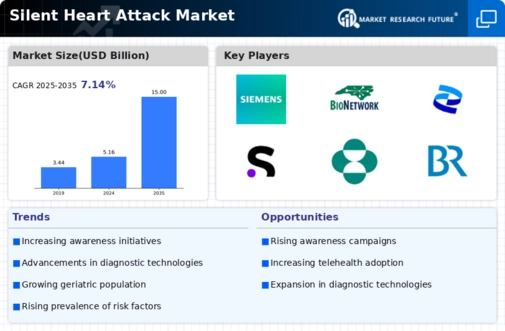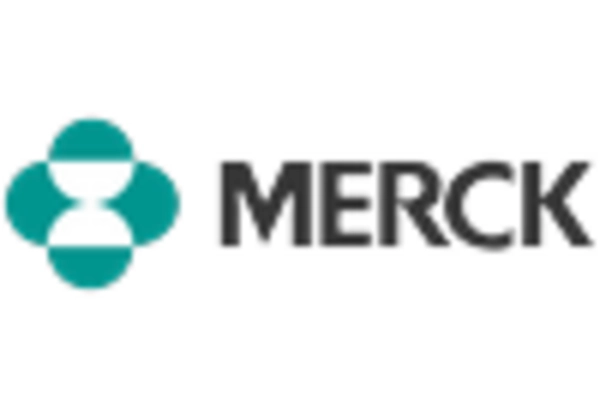Advancements in Diagnostic Technologies
Technological innovations in diagnostic tools are transforming the Silent Heart Attack Market. The development of advanced imaging techniques, such as cardiac MRI and CT angiography, allows for more accurate detection of silent heart attacks. These technologies enable healthcare professionals to identify underlying cardiovascular issues before they escalate into critical conditions. Furthermore, wearable devices equipped with heart monitoring capabilities are gaining traction, providing real-time data to both patients and physicians. As these technologies become more accessible and affordable, the market is expected to expand significantly. The integration of artificial intelligence in diagnostic processes may also enhance the accuracy and efficiency of identifying silent heart attacks, further driving market growth.
Increased Public Awareness and Education
Public awareness and education regarding silent heart attacks are crucial drivers for the Silent Heart Attack Market. As more individuals become informed about the risks and symptoms associated with silent heart attacks, there is a growing demand for screening and diagnostic services. Educational initiatives by healthcare organizations aim to highlight the importance of recognizing risk factors and the need for regular check-ups. This heightened awareness is likely to lead to increased patient engagement in their health management, resulting in more individuals seeking preventive care. Consequently, healthcare providers may respond by expanding their offerings related to silent heart attack detection and management, thereby fostering growth within the Silent Heart Attack Market.
Rising Incidence of Silent Heart Attacks
The increasing prevalence of silent heart attacks is a critical driver for the Silent Heart Attack Market. Research indicates that approximately 45% of heart attacks are silent, often going undiagnosed until more severe complications arise. This trend is particularly concerning among older adults and individuals with diabetes, who are at a higher risk. As awareness grows regarding the asymptomatic nature of these events, healthcare providers are likely to enhance screening protocols. Consequently, this may lead to a surge in demand for diagnostic tools and monitoring devices tailored for early detection. The Silent Heart Attack Market is thus poised for growth as healthcare systems adapt to address this silent epidemic.
Growing Emphasis on Preventive Healthcare
The shift towards preventive healthcare is a notable driver for the Silent Heart Attack Market. As healthcare systems increasingly prioritize prevention over treatment, there is a heightened focus on early detection of cardiovascular diseases. This trend is reflected in the rising adoption of routine screenings and health assessments aimed at identifying risk factors associated with silent heart attacks. Public health campaigns promoting heart health awareness are also contributing to this shift. Consequently, healthcare providers are likely to invest in resources and technologies that facilitate early diagnosis, thereby expanding the Silent Heart Attack Market. The potential for reducing healthcare costs associated with late-stage interventions further underscores the importance of this preventive approach.
Aging Population and Increased Risk Factors
The aging population presents a significant driver for the Silent Heart Attack Market. As individuals age, the risk of cardiovascular diseases, including silent heart attacks, escalates. Factors such as hypertension, high cholesterol, and diabetes are prevalent among older adults, contributing to the likelihood of undetected heart issues. This demographic shift necessitates enhanced healthcare services focused on monitoring and managing heart health. Additionally, the increasing life expectancy means that more individuals are living with chronic conditions that may predispose them to silent heart attacks. As a result, the demand for diagnostic tools and preventive measures within the Silent Heart Attack Market is expected to rise, prompting healthcare systems to adapt accordingly.


















Leave a Comment